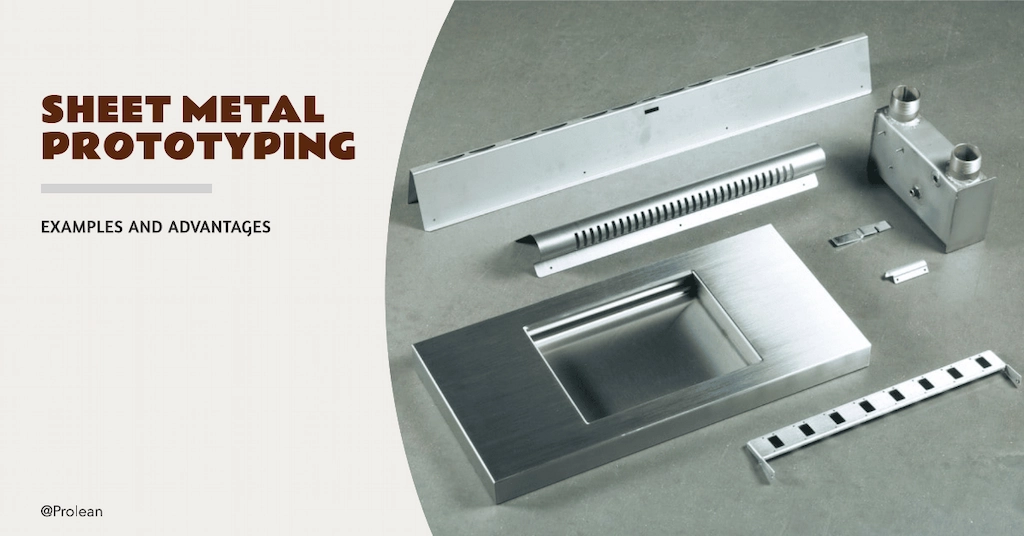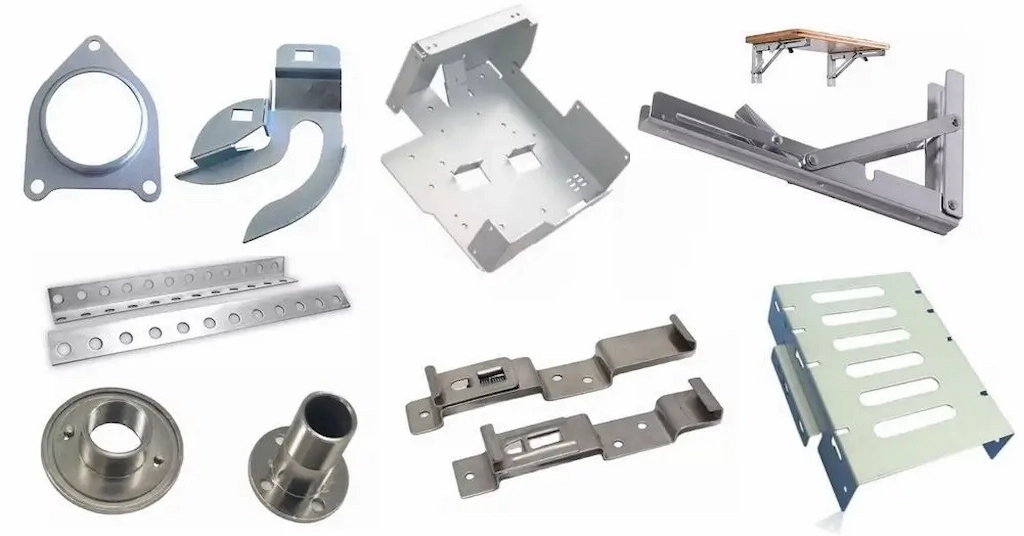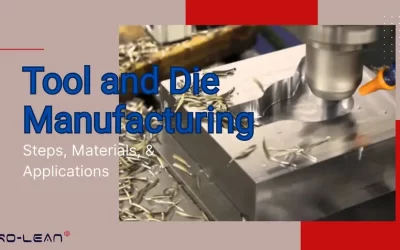“Sheet metal prototyping is crucial for validating designs and ensuring manufacturability. It provides a cost-effective way to assess form, fit, and functions of designed sheet metal parts.”

Sheet metals are important raw materials in manufacturing, which are used to produce diverse arrays of components and products across industries. However, direct full-scale fabrication of designed parts is not practical. The concept first needs to be tested with prototypes. The sheet metal prototyping is essential to test the the technical and economical feasibility of sheet metal design.
The sheet metal prototypes are also valuable in the optimization of design, the test of manufacturability, cost-efficiency, and industry standards and regulatory compliance. Furthermore, this blog will discuss the rapid prototyping of sheet metal parts, including the process, examples, and advantages.
Let’s go through it!
What is Sheet Metal Prototyping?
There are different prototyping methods, CNC Rapid Prototyping, 3D print prototyping, sheet metal prototyping, etc. In particular, sheet metal prototyping means creating testing models from various metal sheets using different fabrication techniques.
First, the thickness of worksheets ranges from 0.006 to 0.25 inches in the sheet metal fabrication projects, so the prototyping. During prototyping, these sheets of suitable metal or alloy are converted into a preliminary product to test and validate design concepts before full-scale production. Various fabrication techniques are involved in the process, cutting, bending, assembling, etc. Additionally, you can use steel, aluminum, titanium, copper, brass, and other metal sheets for prototyping based on the necessary physical and mechanical properties.
The final prototype contains all the details mentioned in the design, including the dimensions, geometrical features, tolerances, and surface finish quality. Therefore, designers and engineers use the rapid sheet metal prototyping to identify and resolve any issues before committing to final production.
Moreover, the reasons why sheet metal prototyping matters in manufacturing are;
- Verification of manufacturability and cost efficiency
- Time to market acceleration
- Ahead of Competitors
- Research and innovation
- Optimal utilization of resources.
Try Prolean Now!
Sheet Metal Prototyping Operations
To convert raw metal sheets into designed prototypes, several metal fabrication operations/ techniques are involved, from metal cutting to assembly. First, Sheets are cut into specific sizes, then bending or other operations, followed by assembly operations like welding and riveting.
Let’s elaborate on the sheet metal prototyping operations chronologically in brief;
1. Sheet Metal Cutting
First, the raw metal sheets are cut into specific shapes according to the prototype design. You can use many techniques of sheet metal cutting based on the thickness and material type, shear cutting, laser cutting, plasma cutting, etc.
- Shear Cutting: A cutting tool with sharp teeth cuts a sheet in a straight line with shear force.
- Laser Cutting: A laser beam melts and vaporizes material from the cutting position to create the cut.
- Plasma Cutting: An accelerated jet of hot plasma( a beam of highly ionized gas) cuts through materials through intense heat.
- Water Jet Cutting: A high-pressure jet of water erodes the material, sometimes mixed with abrasives
Furthermore, the table below summarizes the capabilities of these different techniques;
Table: Sheet Metal Cutting Techniques for Prototyping
| Criteria | Shear Cutting | Laser Cutting | Plasma Cutting | Waterjet Cutting |
| Thickness Capability | Up to 0.25” (6.35 mm) | 0.75” (19 mm) and more | Up to 1” (25 mm) for metals | Up to 6” (150 mm) |
| Cutting Speed | Very high for straight cuts | High, especially for thin materials | High, suitable for thick and thin materials | Moderate to high |
| Precision | ±0.01” (0.25 mm) | ±0.002” (0.05 mm) | ±0.02” (0.5 mm) | ±0.005” (0.13 mm) |
| Intricate Cuts | Limited to straight lines | Complex cuts and patterns | Limited to simple shapes | Excellent for intricate and complex shapes |
| Material Limitation | Best for metals like steel and aluminum | Can cut metals, plastics, wood, and more | Primarily for only conductive metals and alloys | Versatile, metals, plastics, and composites |
2. Sheet Metal Bending
It is the most common deformation technique you will find across rapid sheet metal prototyping projects. Bending involves deforming the sheet metals into specific angular shapes using a press brake and die mechanism. For example, U and V- die bending. However, there are other bending techniques also for rapid sheet metal, roller bending, rotatory bending, etc.
Typically, sheet metal up to 0.25 inches (6.35 mm) thick can be bent. Meanwhile, thicker materials may require some process considerations and specialized equipment. Consequently, bending processes can maintain a precision of ±0.25 to ±1 degree for angles and ±0.005 inches (0.13 mm) for liner dimensions.
3. Other Deformation Techniques
Not all the prototype or their component can be shaped with bending deformations. Some sheet metal prototype designs might require other deformation techniques like stamping, blanking, punching, etc. Unlike Bending, all of these deformation techniques require custom die and punch setups. So, metal sheet prototypes with these techniques could be more costly.
4. Assembly
Next, the individual deformed or fabricated parts are joined together to form the final sheet metal prototypes. It involves using metal joining processes like welding, riveting, and adhesion based on the design. Several considerations are essential in this stage for example alignment of components, precise fittings, and desired tolerances.
- Welding
It involves permanently fusing two or more metal parts using heat, pressure, or a combination of both. Common welding techniques in sheet metal prototyping include TIG, MIG, and spot
- Riveting
Riveting means joining metal sheets using rivets, which are metal pins that are inserted through pre-drilled holes and then deformed to hold the sheets together. This assembly is often used where welding is impractical due to heat concerns.
- Adhesion
Adhesives like epoxies, acrylics, or cyanoacrylates can also bond metal sheet parts together. This technique is beneficial when you need to join dissimilar materials or when a clean appearance without visible fasteners is desired.
5. Post Processing and Surface Treatment
The fabricated might need trimming, deburring, sanding, or other post-processing operations to exact the dimensions and surface characteristics. Additionally, you can apply plating, coating, painting, or other finishes for aesthetics and performance.
Examples of Sheet Metal Prototypes

Sheet metal prototype examples
Let’s see some real-world Applications of sheet metal prototyping;
1. Electrical Enclosures
Stainless steel, aluminum prototyping, or other similar low-weight sheets are used in electrical enclosure prototypes. Typically, the laser cutting process cuts the large sheets into the required shape and size with additional features like holes or ventilation areas. Then, bending deforms the cut pieces into the required geometry. Often, welding is used for assembly.
The prototypes of electrical enclosures offer significant advantages in terms of customization and scalability. You can fabricate custom designs quickly, which meet specific needs, including sizes, mounting options, or specialized access points.
2. Automotive Brackets
Automotive manufacturers and researchers use sheet metal prototyping for various components, structural brackets are one of them. The prototype sheet metal manufacturing for these brackets involves CNC punching to create precise holes and shapes Then, bending and forming achieve the desired geometry.
You can test the fit, function, and safety of the brackets within the vehicle assembly. Prototypes also allow you to test real-world scenarios, like load and stress.
3. HVAC Ducts
The HVAC duct prototyping process involves roll forming to create long sections of ducting, followed by cutting and assembling these sections into the desired configuration. Prototyping HVAC ducts allows you to integrate the ducts within the system layout. So, you can check whether they fit properly and function efficiently or not.
4. Other Examples
Besides the above examples of rapid sheet metal prototyping, other many prototyping applications exist in the manufacturing industry;
- Industrial shelving units
- Machine guards
- Telecom racks
- Medical device housings
- Appliance panels
- Battery enclosures
- Lighting fixtures
- Aircraft components
- Storage cabinets
- Elevator panels
Try Prolean Now!
Advantages of Sheet Metal Prototyping
A sheet metal prototype is the first model of the intended part or product, it offers advantages for numerous applications regarding performance, durability, accuracy of testing, closer-to-real-life product, etc.
- Prototyping Speed: Sheet metal prototyping does not need any complex tooling or fixtures, it can convert the designs into physical items within a few hours.
- Error Identification: The close features of the final product help to identify the functional errors and solve them with rapid iterations.
- Easy Design Change: The prototype design and other variables can be quickly adjusted into the subsequent production cycle.
- Cost-effective: Sheet metal prototypes are less expensive than CNC, Injection molding, or other prototyping. They even cost less than plastic sheet fabrication in some cases.
- Scalability Potential: Once the design is validated, you can seamlessly scale your production from prototyping to low volume manufacturing and mass production.
Choose ProleanTech for Sheet Metal Prototypes
Do you need any prototypes of sheet metal components for your prototyping project? If yes, ProleanTech is one of the best manufacturers that can supply you with sheet metal components for diverse industries, including automotive, aerospace, medical, electronics, etc.
Protean is a leading company in Rapid Prototyping China, providing accurate and cost-effective prototyping solutions across the continents.
Our factory has advanced sheet metal manufacturing and CNC technologies to deliver the precision and complexity for each of your sheet metal prototyping designs. Our Rapid Prototyping Services include CNC machining, laser cutting, bending, stamping, stretching, punching, and many more operations.
So, upload your design and request a quote today for pricing and other information!
Summary
Sheet metal prototypes are the closest forms of intended sheet metal products or components. They allow you to test the functionality, performance, cost, and other various aspects of conceptual designs. You can choose different sheet metal techniques to fabricate your design based on specifications and end requirements, laser cutting, waterjet cutting, V-bending, roller bending welding, riveting, etc.




0 Comments